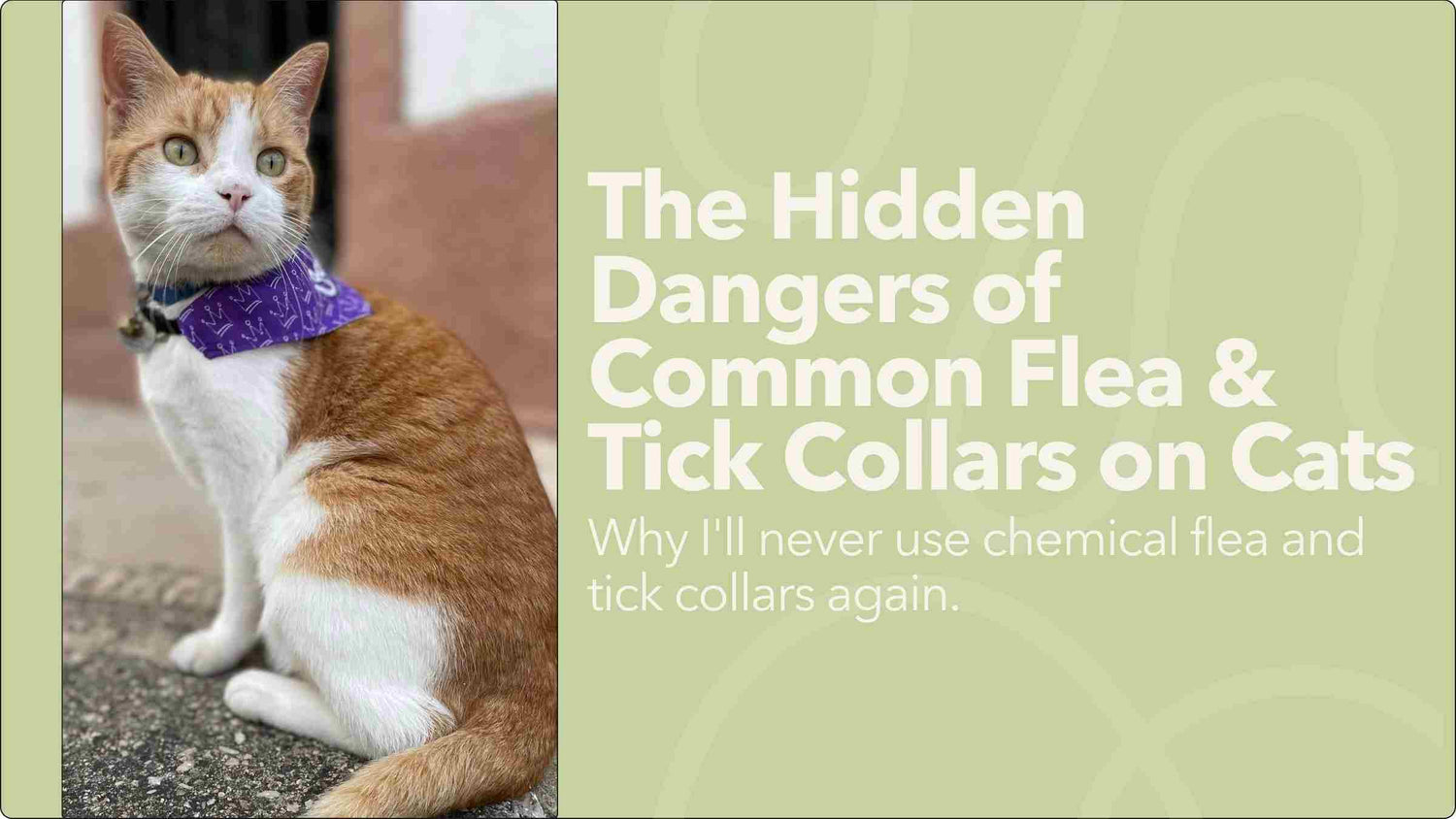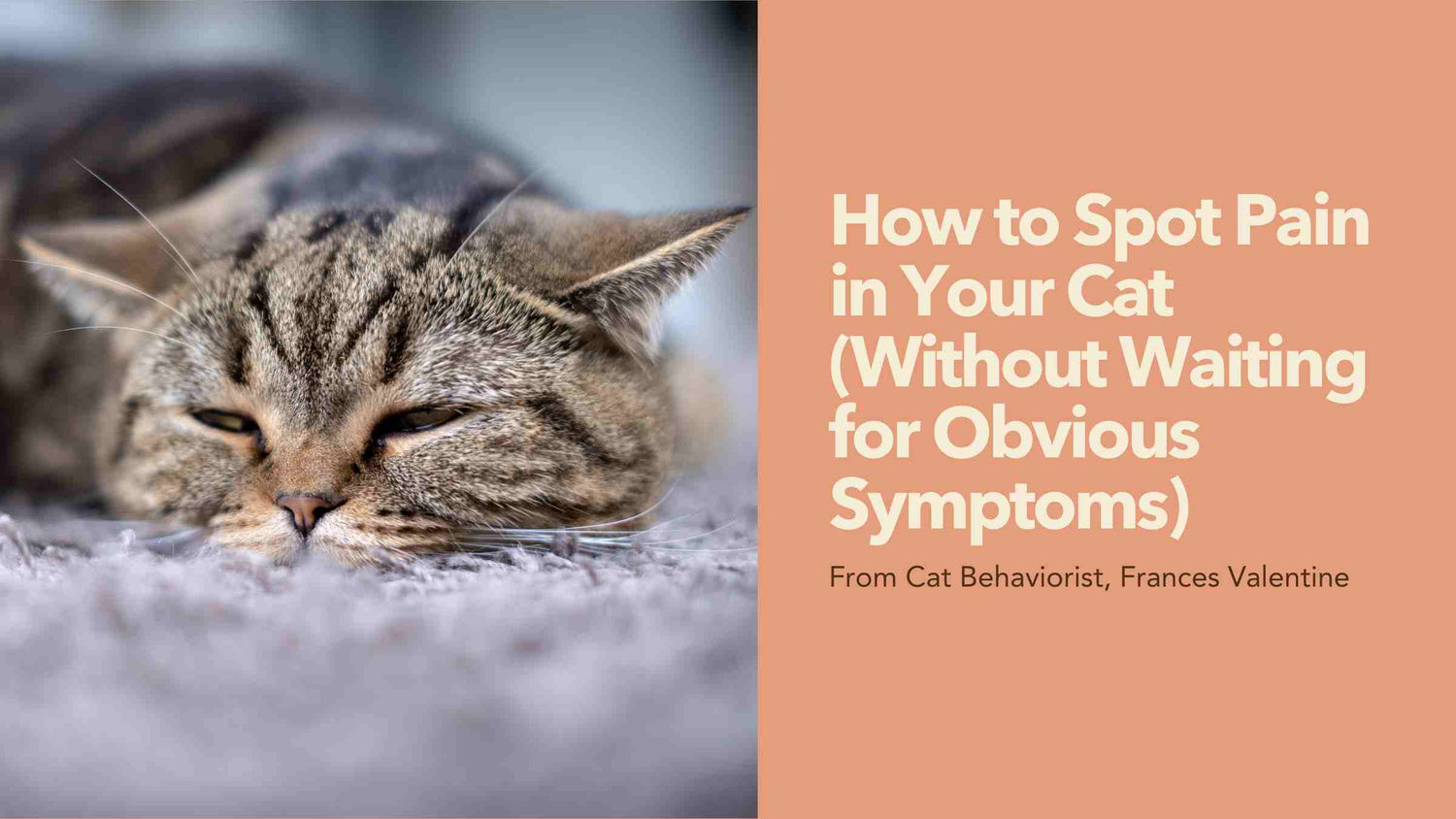Let’s Start From the Beginning
It happened on an otherwise ordinary morning in Sayulita, Mexico. Life, at the time, felt good. Slow, soft, simple in the way you hope life will feel when you’ve made a conscious choice to leave the chaos behind. One afternoon, I was stretched out on the bed with Veda (my ginger girl) tucked beside me, half-reading, half-dozing, and absentmindedly running my fingers along her back like I always did. My hand moved up to her neck, and I barely registered the soft plastic of the new Seresto flea collar she was wearing, something I’d slipped on the night before without thinking twice.

My vet back in the U.S. had recommended it. The box said it was safe. And we were in a tropical climate where fleas were just part of the territory. I wanted to be proactive, to protect her. That’s what responsible cat parents do, right? We follow the guidelines. We trust the professionals. We do the things we’re told are “necessary.”
While in bed, I noticed Veda was scratching more than usual. Not just the usual post-collar, what-is-this-thing- fidgeting. This was frantic, desperate scratching. I figured maybe a bit of sand had gotten trapped underneath. I reached under to check, expecting nothing more than a little irritation.
What I found made my stomach drop.
Her skin was raw, red, and already bleeding in areas. There was a burn circling her neck in the exact shape of the collar. It looked like a chemical reaction, like something corrosive had eaten through her fur and started on her skin. My heart slammed in my chest. I ripped off the collar with immediately threw it in the trash. And then I did the only thing I could think to do. I scooped her up, held her close, and cried. Because I had put that thing on her. I had done this. Not out of neglect, but out of trust.

I didn’t know it then, but this would be one of many moments that would chip away at everything I thought I knew about what it meant to care for a cat.
It wasn’t the beginning. But it was a turning point.
A gut-punch reminder that the things we’re told are “safe,” “standard,” or “necessary” aren’t always what they seem. That just because something is sold in a vet’s office (or stamped with regulatory approval) doesn’t mean it belongs anywhere near my cats.
In that moment, staring at the angry red burn circling Veda’s neck, I felt two things at once: rage and guilt. I wanted to swear off it all right then. To promise I’d never again hand over my trust to a veterinarian so blindly.
But the truth? I wasn’t there yet.
I still deferred. Still doubted myself. Still handed my power back to the professionals more times than I can count, because that’s what we’re taught to do.
This wasn’t the moment everything changed.
But it was one of the moments that started to change me.
It was the moment I stopped feeling so sure. The moment I realized that maybe, just maybe, “safe” didn’t actually mean safe. That maybe the people selling us answers didn’t have all of them. That maybe I needed to start asking better questions.
It cracked something open in me. And once it cracked, it couldn’t be uncracked.
The Deeper I Dug, the Worse It Got
After that day, I couldn’t stop researching. I stayed up late scrolling through forums, vet websites, FDA warnings, and heartbreaking testimonials from other pet parents who’d watched their animals suffer after using the same product.
What I found made me sick:
- The Seresto flea collar, made by Bayer and now owned by Elanco, had been linked to thousands of adverse reactions and even deaths. In fact, more than 2,500 pet deaths and 100,000 incident reports were filed with the EPA, according to a 2022 report by USA Today.
- The Environmental Protection Agency admitted it failed to properly vet the collar’s safety. In a 2024 watchdog report, the EPA was blasted for “serious lapses in scientific oversight.” (Source)
- A class action lawsuit was filed against Elanco, resulting in a $15 million settlement to compensate pet parents for injuries or losses caused by the collar. (Settlement details here)
The deeper I went, the angrier I got. These weren’t rare reactions. They weren’t flukes. And yet this product was still being sold in stores, still being recommended by vets, still sitting on shelves in fancy packaging with the words like “protection”, “health”, and “comfort” printed all over it.
How many people had to go through what I did (or worse) before the truth was acknowledged? And yet, I was one of the lucky ones. My Veda girl only had a mild reaction. She lived. My heart breaks for the thousands of pet parents who’s pets weren’t so lucky.
What I Use Instead: Safer, Natural Options
After that, I knew I needed to find something better. Not just safer, but supportive. Something that worked with my cats’ bodies, not against them.
Here’s what I’ve done or used since:
Gut + Immune Support: A strong immune system makes your cat less appealing to parasites. I focus on raw, species-appropriate food, hydration, and gut health. Parasites thrive in an imbalanced gut and feed off excess carbohydrates...something far too common in kibble and many canned foods. I use tools like slippery elm, Adored Beast’s Gut Soothe, and probiotics to build internal resilience, reduce inflammation, and support detox pathways.
Flea Repellent Spray (Cat-Safe): I make my own repellent and lightly spritz it on their fur or apply it by hand:
- 8 oz distilled water
- 4 oz raw organic apple cider vinegar (with the mother)
- 10 drops neem oil
- 10 drops catnip oil
- 5 drops geranium or 5 drops lemongrass essential oil (choose one, not both)
You can get the full recipe and step-by-step here.
‼️IMPORTANT: Use high-quality oils only like AnimalEO, Mountain Rose Herbs, or Young Living.
Pumpkin Seeds for Worm Prevention: Raw, organic, unsalted pumpkin seeds, finely ground and added to meals a few times a week. I typically give about 1/8 of a teaspoon per cat.
Flea Bomb (For the Home): This one’s for the environment, NOT the cats. I had to do this when I brought in an abandoned street kitten last year. She will filled with fleas (and parasites), so we had a big infestation. This flea bomb worked. I add 70 drops each of black pepper oil, peppermint oil, and oregano oil to a diffuser filled with water. Run it on high for 2–3 hours with all cats safely out of the room and without access to the room. Then air out the space for 24–48 hours before letting them back in.
Weekly Bedding Wash: Hot water, no compromise. Wash all pet bedding and blankets once a week.
Apple Cider Vinegar Rinse: A 1:1 mix of raw apple cider vinegar and water on a damp washcloth, wiped gently along their fur. Once a month. Smells weird, but fleas hate it.
Fractionated Coconut Oil: I also use fractionated coconut oil as a gentle flea repellent and skin moisturizer. You can rub a small amount on your cat’s body (especially in common areas where fleas hide (chin, around the collar, base of the tail, etc), especially during flea season. It repels fleas, ticks, and ear mites, and as a bonus, it keeps their coats shiny and skin healthy
I’ve also heard good things about food-grade diatomaceous earth, especially for sprinkling along windowsills and baseboards, though I haven’t used it yet. I’m cautious and always research before trying anything new.
And maybe most importantly, I no longer default to chemicals just because I’m told to. If there’s an active infestation or an extreme case of flea allergy, I’ll consult with my holistic vet and consider every tool available. But I won’t ever again use something “preventatively” without asking: Is this actually necessary? Is it safe? What are the tradeoffs?
Final Thoughts: Veda Wasn’t the First and She Won’t Be the Last
Veda healed. Slowly, with a lot of care, herbs, flower essences, and energy work—her skin repaired, her fur grew back, and her body cleared the toxins as best it could. But the scar that moment left in me? That’s still there.
Because when something hurts your cat (something you thought was safe) it changes you.
It makes you question everything you’ve been taught about medicine, trust, and what it means to protect the beings you love most.
I share this not to scare you. But to offer a hand on your back, a nudge toward your own knowing.
You’re allowed to ask questions. You’re allowed to go slow. You’re allowed to do things differently.
And if you’ve had a moment (like mine) that cracked something open in you… I just want you to know:
You’re not alone.
(And I’m really glad you’re here.)
⚠️ Disclaimer
This post is based on my personal experience. I’m not a vet and I’m not here to replace one. But I am here to share what helped, in case it helps you too. Every cat is different. Please trust your gut, do your research, and work with a qualified professional when needed.




